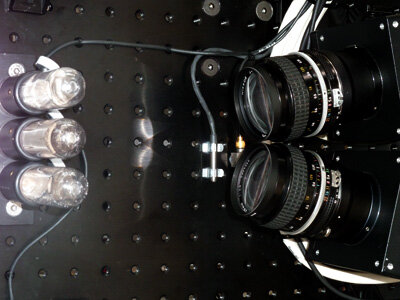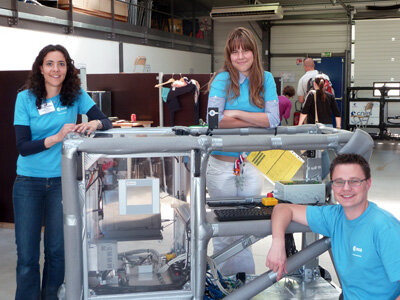Meet the teams
Four teams of postgraduate students flew their experiments during the 2011 'Fly Your Thesis!' campaign. Here is an introduction to the Dutch team.
![]()
ARID team – Electrostatic interactions of topsoil particles to study the reorientation of water-repellent coatings![]()
![]()
| University | University of Amsterdam, the Netherlands |
| Endorsing professor |
Dr. Erik Cammeraat University of Amsterdam |
| Assistant professor |
Dr. Christina Giannopapa Technical University of Eindhoven |
| ELGRA mentor |
Dr. Thodoris Karapantsios Aristotle University of Thessaloniki |
| Team |
Sebastiaan De Vet Lieke Mulder |

This student experiment used an innovative approach to studying the properties of the orientation of water-repellent coatings at the level of an individual sand particle. In the experiment the hypothesised orientation and associated charge properties of the coating’s state were investigated by studying collisions between individual sand particles. When charged (non water-repellent) particles collide, they slightly repel each other and these collisions thus differ from those with ‘neutral’ grains (water-repellent or stripped of their coating). The only suitable research environment for observing such collisions, free of interfering factors, is in microgravity. The kinetics of these collisions is used to make the link between the chemical and large-scale properties of the soil.
During the flights, the collisions began by giving the test tubes a starting velocity, using a special launch platform. Sand and sand-analogue particles were used with a normal coating, a water-repellent coating and without a coating, covering different particle sizes and vegetation. Their water-repellent properties were measured pre-flight under a microscope to measure the contact angle with a water droplet. When the particles were free-floating and colliding in microgravity, two high-speed cameras recorded the collisions with high precision in 3D. Post-flight data processing allowed the use of the microgravity data to link chemical and field studies in one broad approach to studying the mechanisms of soil-water repellency.

Soil water repellency is a growing problem in many European countries within the context of the changing global climate. Means for combating and mitigating water repellency are being studied worldwide. Understanding the broad-scale dimension of water repellency allows more effective strategies to be developed.
The expected results of this student experiment fit well within the larger context and contribute to the linking and understanding of large-scale effects of water repellency in relation to the microscale coating chemistry. New insights gained by the application of the microgravity experiment data could improve our understanding of soil-water repellency and may influence the development of better mitigation techniques and land management strategies.
Read more about this experiment on the ERASMUS Experiment Archive.



